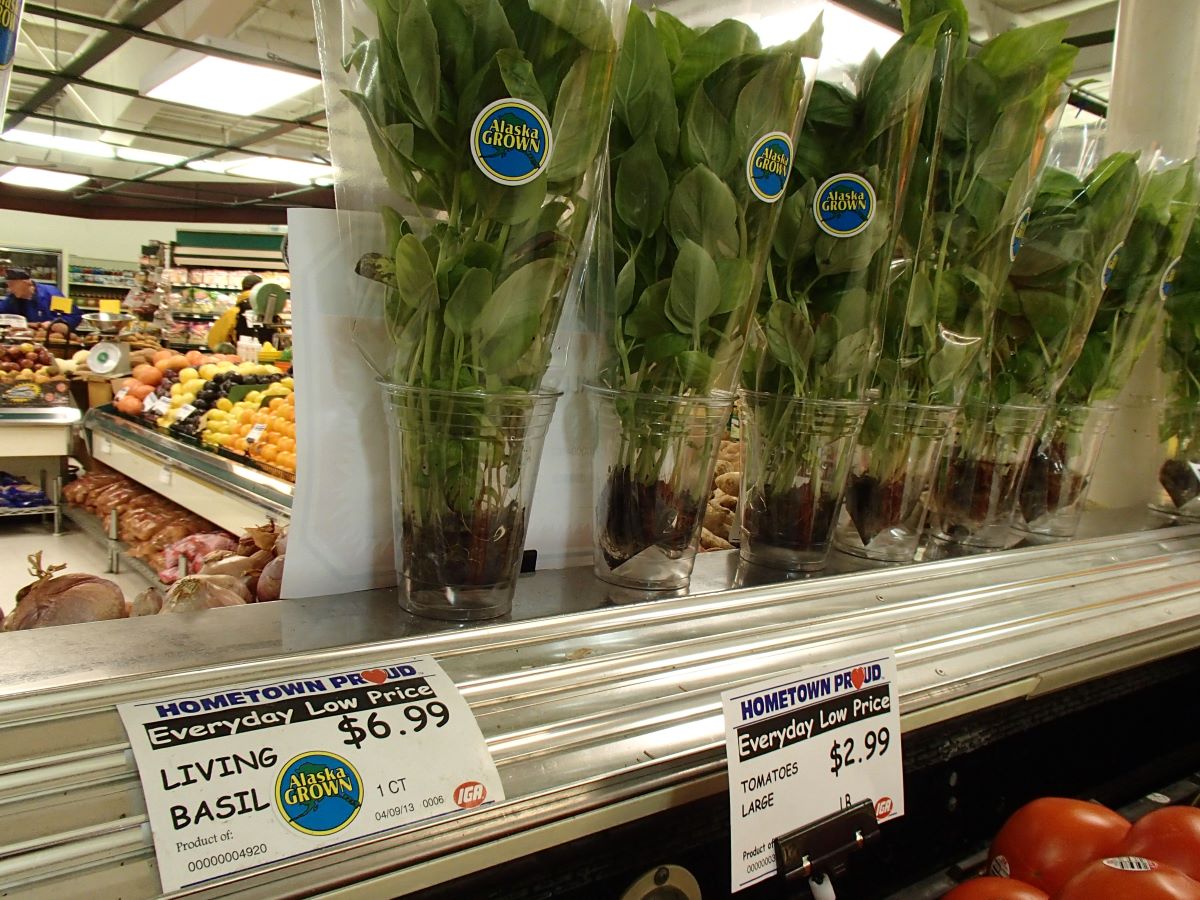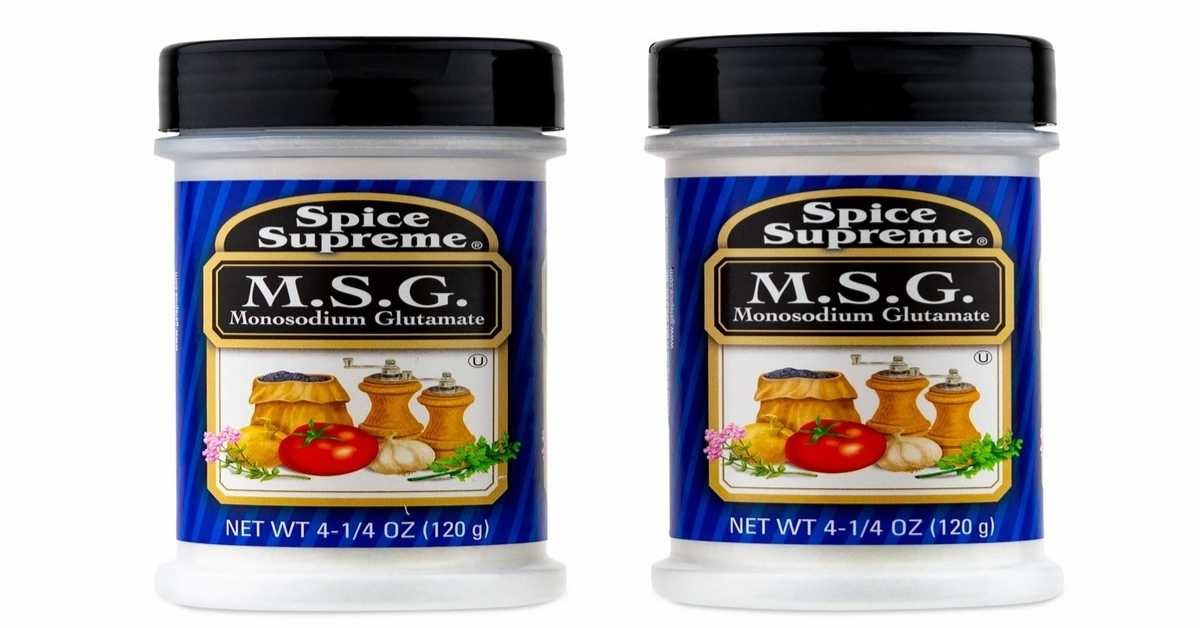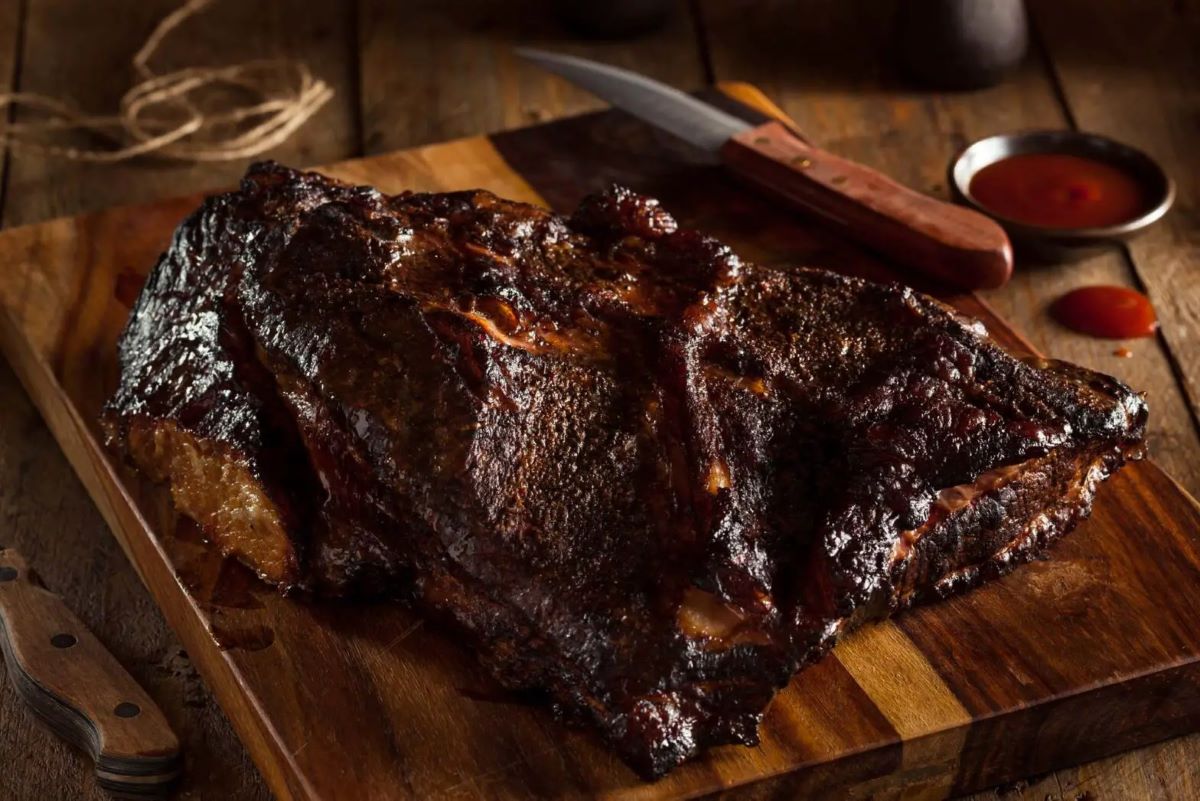

Articles
How To Store Mangosteen
Modified: May 6, 2024
Learn how to properly store mangosteen in this informative article. Discover the best tips and methods to keep your mangosteen fresh and delicious for longer.
(Many of the links in this article redirect to a specific reviewed product. Your purchase of these products through affiliate links helps to generate commission for Storables.com, at no extra cost. Learn more)
Introduction
Mangosteen, known as the “queen of fruits,” is a tropical fruit with a unique taste and numerous health benefits. Its sweet and tangy flavor makes it a favorite among fruit enthusiasts around the world. However, mangosteens have a short shelf life, and if not stored properly, they can quickly spoil.
In this article, we will explore the best practices for storing mangosteens to keep them fresh and flavorful for a longer period. Whether you have a bountiful harvest from your garden or you purchased a batch from the local market, these tips will help you preserve the quality of your mangosteens.
From choosing perfectly ripe mangosteens to exploring different storage methods, we will cover everything you need to know to ensure that your mangosteens stay delicious and enjoyable over time. So let’s dive in and learn how to properly store this exotic fruit!
Key Takeaways:
- Choose ripe mangosteens with deep purple color and firmness for longer shelf life. Properly prepare, store in ideal conditions, and handle with care to extend freshness.
- Store mangosteens in the fridge for short-term freshness, freeze for longer storage, or can for year-round enjoyment. Experiment with drying, preserves, and other creative methods to savor this exotic fruit.
Read more: How To Grow Mangosteen From Seed
Choosing Ripe Mangosteens
When it comes to storing mangosteens, selecting ripe fruit is crucial. Ripe mangosteens not only taste better but also have a longer shelf life. Here are some tips to help you choose the best, ripe mangosteens:
- Look for a deep purple color: The skin of a ripe mangosteen should be deep purple, indicating that it is fully matured. Avoid mangosteens with green or yellow hues, as they are not yet ripe.
- Check for firmness: Gently press the top of the mangosteen with your thumb. It should yield slightly but not be too soft or mushy. Avoid mangosteens that are too hard or have soft spots.
- Inspect the stem: The stem of a ripe mangosteen should be dry and intact. If the stem is brown or shriveled, it may indicate that the fruit is overripe or spoiled.
- Smell the fruit: Ripe mangosteens have a fragrant, sweet aroma. If you detect a sour or fermented smell, it may indicate that the fruit is past its prime.
Remember, mangosteens are delicate fruits, so handle them with care while choosing. Selecting ripe mangosteens not only ensures better taste but also increases the chances of successful storage.
Now that you know how to select the best mangosteens, let’s move on to the next step: preparing the mangosteens for storage.
Preparing Mangosteens for Storage
Before storing mangosteens, it’s essential to properly prepare them. Here’s what you need to do:
- Wash the fruit: Rinse the mangosteens under cool running water to remove any dirt or debris from the surface. Use a gentle scrub brush to lightly clean the skin, if needed. Dry the mangosteens thoroughly with a clean towel.
- Remove the stem: Gently twist and pull the brown stem at the top of the mangosteen to remove it. This step helps prevent the stem from poking through the skin, which can lead to spoilage.
- Inspect for any damaged fruit: Examine each mangosteen for any signs of bruising, rotting, or mold. Remove any damaged or spoiled fruits from the batch. It’s important to separate these fruits to prevent the spoilage from spreading to the others.
- Separate into smaller batches: If you have a large quantity of mangosteens, consider dividing them into smaller, manageable batches. This way, you won’t disturb the entire batch each time you want to consume some fruit.
By following these preparation steps, you ensure that your mangosteens are clean, free from damage, and ready for storage. Properly prepared mangosteens have a better chance of staying fresh and retaining their taste and texture.
Next, let’s explore the ideal storage conditions for mangosteens to maintain their quality for an extended period.
Proper Storage Conditions
Creating the right storage conditions is crucial for preserving the quality of mangosteens. Here are the key factors to consider:
- Temperature: Mangosteens thrive in a cool environment. The ideal temperature for storing mangosteens is around 55 to 60 degrees Fahrenheit (13 to 16 degrees Celsius). Avoid exposing the fruit to extreme heat or cold, as it can hasten spoilage.
- Humidity: Mangosteens prefer high humidity levels. Aim for a humidity range of 80% to 90% to keep the fruit from drying out. If the environment is too dry, you can place a damp cloth or a small bowl of water near the mangosteens to maintain moisture.
- Ventilation: Good air circulation is essential to prevent moisture buildup and reduce the risk of mold or rot. Avoid tightly sealing the mangosteens in a container or plastic bag without any ventilation.
- Light: Mangosteens are sensitive to light and can spoil if exposed to direct sunlight or excessive artificial light. Store them in a dark or dimly lit area to protect them from light exposure.
Keep these storage conditions in mind when deciding where to store your mangosteens. A cool and humid environment with adequate ventilation and minimal light exposure will help extend their shelf life.
Now that we know the optimal storage conditions, let’s explore two popular methods for storing mangosteens: in the fridge and freezing.
Storing Mangosteens in the Fridge
The refrigerator is an excellent option for storing mangosteens if you plan to consume them within a few days. Here’s how to store mangosteens in the fridge:
- Select a clean container: Choose a clean, airtight container or a plastic bag with small ventilation holes. Make sure the container or bag is big enough to hold the mangosteens without overcrowding.
- Arrange the fruit: Place the mangosteens in a single layer inside the container or bag. Avoid stacking them on top of each other, as it can cause bruising and premature spoiling.
- Seal and store: Seal the container or close the bag tightly to create a good seal. Place the mangosteens in the crisper drawer or a designated spot in your refrigerator.
- Keep away from strong aromas: Mangosteens can absorb odors from strong-smelling foods. To maintain their flavor integrity, store them away from other fruits or vegetables with potent aromas.
- Check regularly: Periodically check the mangosteens for any signs of spoilage. Remove any fruit that shows signs of mold, rot, or extreme softness to prevent spoilage from spreading to the others.
When stored in the refrigerator, mangosteens can stay fresh for up to a week. However, keep in mind that refrigeration can slightly alter the texture of the fruit, making it firmer. If you prefer mangosteens at room temperature, allow them to sit out for a while before consuming.
Now that you know how to store mangosteens in the fridge, let’s explore another option: freezing mangosteens.
Store mangosteen in a cool, dry place, away from direct sunlight. You can also store them in the refrigerator for up to a week to extend their shelf life. Avoid storing them near strong-smelling foods as they can easily absorb odors.
Read more: How Long Until Purple Mangosteens Germinate
Freezing Mangosteens
Freezing mangosteens is a great way to extend their shelf life and enjoy them for a longer period. Here’s how you can freeze mangosteens:
- Prepare the fruit: Wash and dry the mangosteens thoroughly. Remove the stems and cut a small slit on the skin of each fruit. This step helps in preventing the fruit from bursting during the freezing process.
- Place on a tray: Arrange the prepared mangosteens in a single layer on a tray. Make sure they are not touching each other to prevent them from sticking together.
- Flash freeze: Place the tray of mangosteens in the freezer and allow them to freeze for about 2 hours or until they are partially frozen. This process, known as flash freezing, helps maintain the individual integrity of each fruit.
- Transfer to a freezer bag: Once the mangosteens are partially frozen, transfer them into a freezer bag. Squeeze out as much air as possible from the bag and seal it tightly.
- Label and date: Write the date on the freezer bag to keep track of the freezing time. This is important as frozen mangosteens are best consumed within 6 to 8 months.
- Return to the freezer: Place the sealed bag of mangosteens back in the freezer. Make sure to store them in a spot free from any strong-smelling food to avoid flavor contamination.
When you’re ready to enjoy your frozen mangosteens, simply remove the desired amount from the freezer and thaw them in the refrigerator or at room temperature. Frozen mangosteens are perfect for adding to smoothies, fruit salads, or enjoying as a refreshing snack.
Now that you know how to freeze mangosteens, let’s explore another storage method: canning.
Canning Mangosteens
Canning mangosteens is a popular preservation method that allows you to enjoy the fruit long after the harvest season. Here’s a step-by-step guide to canning mangosteens:
- Gather the supplies: Before you begin the canning process, make sure you have all the necessary supplies, including clean canning jars with lids, a canning pot, a jar lifter, and a canning funnel.
- Prepare the fruit: Wash the mangosteens and remove the stems. Carefully cut a small slit on the skin of each fruit to prevent bursting during the canning process.
- Make the syrup: Prepare a syrup by combining water and sugar in a saucepan. The ratio commonly used is 2 cups of water to 1 cup of sugar. Heat the mixture until the sugar dissolves completely.
- Fill the jars: Using a canning funnel, pack the prepared mangosteens into the sterilized jars, leaving about 1 inch of headspace. Pour the syrup over the fruit, again leaving 1 inch of headspace.
- Remove air bubbles: Use a non-metallic tool, such as a chopstick or a plastic spatula, to remove any air bubbles trapped in the jars. This step ensures proper sealing and preservation.
- Seal the jars: Wipe the rims of the jars with a clean, damp cloth to remove any residue. Place the lids on the jars and screw on the bands until they are fingertip tight.
- Process the jars: Place the filled jars in a canning pot filled with water. Ensure that the jars are fully immersed in water, with at least 1 inch of water above the lids. Process the jars according to your altitude and the recommended processing time for mangosteens (consult canning resources for specific guidelines).
- Cool and store: Once the processing time is complete, use a jar lifter to remove the jars from the canning pot and place them on a towel-lined surface. Allow the jars to cool completely before checking the seals. Store the properly sealed jars in a cool, dark place like a pantry or cellar.
Canned mangosteens can be stored for up to a year or longer if properly sealed and stored. They can be enjoyed on their own or used in various recipes such as desserts and jams.
Now that you know how to can mangosteens, let’s explore some additional storage methods.
Other Storage Methods
Aside from refrigerating, freezing, and canning, there are a few other storage methods that you can consider for mangosteens:
- Drying: Mangosteens can be dried to prolong their shelf life. Slice the fruit into thin slices and lay them out on a drying rack or dehydrator tray. Dry them at a low temperature until they become crispy. Store the dried mangosteens in an airtight container in a cool, dry place.
- Preserves and jams: Another way to enjoy mangosteens long after the harvest season is by making preserves or jams. Cook the fruit down with sugar and other desired ingredients until it thickens. Pour the preserve or jam into sterilized jars and seal them properly.
- Fruit leather: Mangosteens can be transformed into delicious fruit leather. Puree the fruit and spread it thinly on a parchment-lined baking sheet. Slowly dry the puree in a low-temperature oven until it is leathery. Roll it up and store in an airtight container.
- Infused water or beverages: For a refreshing twist, infuse mangosteens into water or other beverages. Simply add sliced mangosteens to water, juice, or tea and allow the flavors to meld. Keep the infused drink refrigerated for up to a few days.
These alternative storage methods offer different ways to preserve and enjoy mangosteens beyond their fresh form. Experiment with different methods and find the one that suits your taste and preferences.
Now that you’re equipped with various storage methods, let’s explore some tips to help you extend the shelf life of mangosteens.
Tips for Extending Shelf Life
To maximize the shelf life of mangosteens and keep them fresh for as long as possible, consider the following tips:
- Handle with care: Mangosteens have delicate skin, so handle them gently to prevent bruising or damage that can lead to spoilage.
- Avoid washing until ready to use: While it’s important to wash mangosteens before consuming, avoid washing them until you’re ready to eat or store them. Moisture can accelerate spoilage, so it’s best to keep the fruit dry until necessary.
- Store unwashed: Unless the mangosteens are dirty, it’s generally recommended to store them without washing. Washing before storage can introduce moisture and increase the risk of mold growth.
- Separate spoiling fruit: If you notice any spoiled or moldy mangosteens in the batch, remove them immediately to prevent the spoilage from spreading to the remaining fruit.
- Consume ripe mangosteens first: If you have both ripe and unripe mangosteens, consume the ripe ones first as they have a shorter shelf life. Unripe mangosteens can be left to ripen at room temperature.
- Rotate your stock: If you frequently purchase mangosteens, make sure to rotate your stock. Use the older ones first to avoid any fruit going to waste. This practice ensures that you always have fresh mangosteens on hand.
- Check regularly: Periodically check the stored mangosteens for any signs of spoilage, such as mold, rot, or extreme softness. Removing spoiled fruit promptly can help prolong the shelf life of the remaining mangosteens.
By following these tips, you can extend the shelf life of mangosteens and enjoy their delicious flavor for a longer period.
Now that we’ve covered various storage methods and tips, let’s summarize what we’ve learned.
Read more: How To Store Store-Bought Bread
Conclusion
Properly storing mangosteens is essential to preserve their taste, texture, and nutritional value. With the right techniques, you can extend their shelf life and enjoy this exotic fruit for an extended period.
Start by choosing ripe mangosteens with a deep purple color and firm texture. Prepare them by washing, removing the stems, and inspecting for any damaged fruit. Creating the ideal storage conditions, including temperature, humidity, ventilation, and light, is vital to keeping mangosteens fresh.
When it comes to storage methods, you have several options. Storing mangosteens in the fridge is suitable for short-term storage while maintaining their freshness. Freezing mangosteens allows you to enjoy the fruit for a longer period, with the convenience of thawing whenever desired. Canning mangosteens preserves their flavor and makes them available throughout the year. Other methods such as drying, making preserves or jams, and infusing into beverages offer additional ways to enjoy mangosteens.
To extend the shelf life of mangosteens, handle them with care, avoid excess moisture, and promptly remove any spoiled fruit from the batch. By following these tips and practices, you can make the most out of your mangosteen supply and reduce waste.
Remember, mangosteens are a delightful and nutritious fruit that deserve proper storage. So, whether you’re enjoying them fresh, frozen, canned, or through other creative methods, savor the unique flavor and health benefits that the “queen of fruits” has to offer.
Now that you’re equipped with comprehensive knowledge on how to store mangosteens, go ahead and make the most of this exotic fruit!
Now that you've mastered storing mangosteen, why stop there? Keeping fruits fresh and tasty is an art worth perfecting. Dive into our latest guide on the best methods and tips for fruit preservation. Whether you're a novice or a seasoned pro, this article will surely spruce up your storage strategies, ensuring every piece of fruit remains as delightful as the day it was picked. Don't miss out—check out our essential read for anyone looking to keep their fruity harvest in top condition throughout the year.
Frequently Asked Questions about How To Store Mangosteen
Was this page helpful?
At Storables.com, we guarantee accurate and reliable information. Our content, validated by Expert Board Contributors, is crafted following stringent Editorial Policies. We're committed to providing you with well-researched, expert-backed insights for all your informational needs.














0 thoughts on “How To Store Mangosteen”